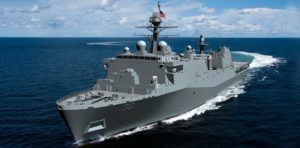
Two members on the Senate Armed Services Committee’s (SASC) Seapower panel sent a letter to the Secretary of the Navy on Nov. 15 urging him to provide to Congress the overdue results of an amphibious warship study. “During your annual force posture hearing in May, we asked about the status of a study you commissioned to analyze the number of amphibious ships needed in our Navy fleet. You told us that the study would be released ‘in the next several…

 By
By 











